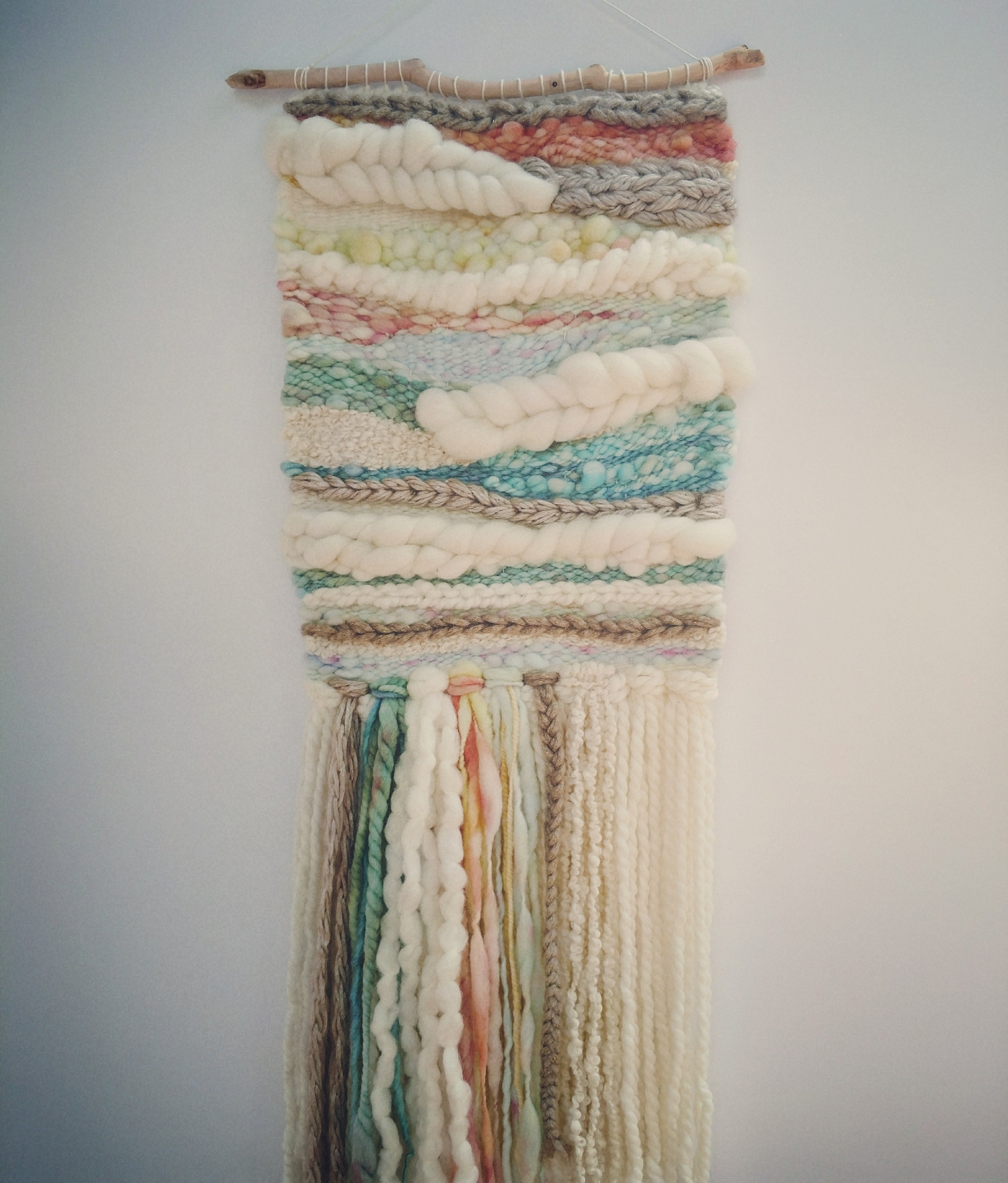Now you're ready to weave! Thread a tapestry needle, or other needle with a large eye, with your chosen weft yarn, and start going over and under your warp threads. Leave a bit of a tail in the back of the piece to weave in later to secure the weft threads.
Oh, and if you've done any weaving before I'm sure you've encountered the dreaded pulling in of the sides. It happens to all of us the first few times and the key to avoiding it is to NOT PULL TIGHT. In fact, bubble the weft thread at an angle as you go over and under, and don't yank on the weft. Gently push the threads down with your fingers, a wide toothed hair comb, or even a fork (this is called beating down the weft). The actual act of going over and under threads takes up some of the length of the yarn, and by bubbling or angling the weft up before you beat it against the previous rows, you're allowing the weft to take up that length, and settle nicely.
I highly recommend using a relatively plain worsted weight or thinner yarn for the first few rows of weft, and weaving a plain weave, or tabby weave, for several rows. The plain weave is literally: over one thread, under the next. On the next row, go under the threads you went over last time, and over the threads you went under before. This will help give a nice selvedge edge to your hanging.
When you come to the end of your weft thread, pull it through to the back, leaving a few inches as a tail. Then thread another piece--same color, different color, whatever you want!--and keep going. Change colors, skip warp thread (over 2, under 2; over 2, under 1, etc.) to get the pattern you want. Add fringe with rya knots, texture with soumak weave, weave straight lines, angles. There are infinite possiblities! And try lots of things for your weft! I love working with roving and wool top (unspun fiber), jute twine, and metallic fibers, and I've seen amazing weaves made with birch bark and ribbons as well. Mess around, see what you can come up with!
I am not the fringiest of ladies, but sometimes, it's called for.








